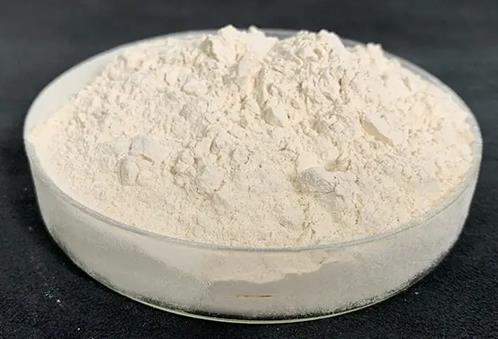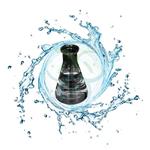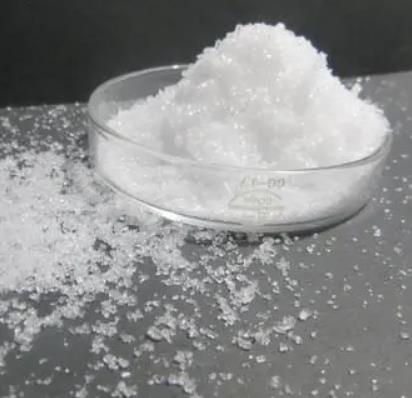Application research of 4,4'-Dibromobiphenyl
Introduction
Polybrominated flame retardants as one of class of industrial fire retardants, owing to their widely used in consumer products ranging from electronics to plastics, textiles, furniture, and carpets, are ubiquitous in the environment, and has become of increasing concern to scientists over the past decade. However, our knowledge about these chemicals, there sources, environmental behavior and toxicity is limited, and already arouse people's more and more attention. 4,4'- Dibromobiphenyl (Figure 1) is the most typical representative.[1] In addition, 4,4'-dibromobiphenyl is also an important intermediate for the synthesis of 4,4-dihydroxybiphenyl.

Synthesis technology of 4 ,4'-dibromobiphenyl
In the presence of a self-made catalyst, biphenyls and liquid bromine which were used as raw materials were transformed into 4,4'-dibromobiphenyl. When the molar ratio of biphenyls, liquid bro-mine and catalysts was 1 : 2. 3 : 0, 00125, the reaction time was 5 h, the temperature was 40 ℃, and the dropping time of liquid bromide was 40 min, the average yield and the purity of product could reach 94% and 98% respectively.[2]
Application research example
Catalytic subcritical oxidation of 4,4'-Dibromobiphenyl
In situ transformation of 4,4'-Dibromobiphenyl (4,4'-DBB) in water was observed with hydrothermal diamond anvil cell (HDAC) up to 633 K. It shows that 4,4'-dibromobiphenyl dissolves in water to form a homogenous phase at the temperature of 588 K and thus subcritical water oxidation of 4,4'-dibromobiphenyl higher than the temperature can be a homogenous phase. To accelerate the oxidative degradation, some Mn-Ce-Co complex oxide nanoparticles of about 100 nm were prepared by co-precipitation hydrothermal method. The nanoparticles show enough stability and catalytic activity for oxidative degradation of 4,4'-dibromobiphenyl in subcritical water. The catalytic activation increases with some Co doping and as for the complex oxides of Mn(1)Ce(1), Mn(0.9)Ce(1)Co(0.1), Mn(0.5)Ce(1)Co(0.5), Mn(0.1)Ce(1)Co(0.9), and Co(1)Ce(1), the Mn(0.9)Ce(1)Co(0.1) presents the best activation. The main intermediate products of degradation are benzoic acid and phenol. The apparent activation energy (E(a)) is 35.92 with 5% Mn(0.9)Ce(1)Co(0.1) as catalyst and 46.69 kJ/mol with no catalyst about the chemical oxygen demand (COD).[3]
Photoelectrocatalytic degradation of 4,4'-dibromobiphenyl in aqueous solution
Polybrominated biphenyls have been widely used as flameretardants in textile and electronic industries, and additives in plastics. Over the past few decades, much attention has been given to polybrominated biphenyls in the environment and their effects on humans. In this paper, we studied on the degradation of 4,4'-dibromobiphenyl, a typical one of polybrominated biphenyls, through photoelectrocatalytic process with TiO₂, Zr/TiO₂ and Zr, N/TiO₂ nanotube arrays. The results showed that the photoelectrocatalytic process was more efficient than photocatalytic and electrolytic process alone. The results exhibited that the photoelectrocatalytic efficiency was significantly affected by the properties of the catalysts and bias potential, and the highest photoelectrocatalytic degradation rate was achieved with Zr, N/TiO₂ at 1 V and the order was Zr, N/TiO₂>Zr/TiO₂>TiO₂. The mechanism was also discussed by detecting the changes of pH value, bromine anion, total organic carbon and intermediates during the process.[4]
4,4'-Dibromobiphenyl can invert the crystals polarity
180° Orientational disorder of molecular building blocks can lead to a peculiar spatial distribution of polar properties in molecular crystals. Here we present two examples [4-bromo-4'-nitrobiphenyl (BNBP) and 4-bromo-4'-cyanobiphenyl (BCNBP)] which develop into a bipolar final growth state. This means orientational disorder taking place at the crystal/nutrient interface produces domains of opposite average polarity for as-grown crystals. The spatial inhomogeneous distribution of polarity was investigated by scanning pyroelectric microscopy (SPEM), phase-sensitive second harmonic microscopy (PS-SHM) and selected volume X-ray diffraction (SVXD). As a result, the acceptor groups (NO2 or CN) are predominantly present at crystal surfaces. However, the stochastic process of polarity formation can be influenced by adding a symmetrical biphenyl to a growing system. For this case, Monte Carlo simulations predict an inverted net polarity compared with the growth of pure BNBP and BCNBP. SPEM results clearly demonstrate that 4,4'-dibromobiphenyl (DBBP) can invert the polarity for both crystals. Phenomena reported in this paper belong to the most striking processes seen for molecular crystals, demonstrated by a stochastic process giving rise to symmetry breaking. We encounter here further examples supporting the general thesis that monodomain polar molecular crystals for fundamental reasons cannot exist.[5]
References
1. Liu Guo-guang,Zhang Nan,ZhangMin-li. Photo-degradation kinetics of 4,4’-dibromobiphenyl in aqueous solution[J]. Environmental Science & Technology,2012,35(12):92-95+149.
2. Wang Yu-jing,et al. Study of synthesis technology of 4,4'-dibromobiphenyl[J]. Journal of Hefei University of Technology,2013,36(6):737-739. DOI:10.3969/j.issn.1003-5060.2013.06.023.
3. Chen J, Xu T, Ding J, Ji Y, Ni P, Li Z. Mn-Ce-Co complex oxide nanoparticles: hydrothermal synthesis and their catalytic subcritical oxidation of 4,4'-Dibromobiphenyl. J Hazard Mater. 2012;235-236:85-91. doi:10.1016/j.jhazmat.2012.07.013
4. Liu H, Liu G, Fan J, et al. Photoelectrocatalytic degradation of 4,4'-dibromobiphenyl in aqueous solution on TiO? and doped TiO? nanotube arrays. Chemosphere. 2011;82(1):43-47. doi:10.1016/j.chemosphere.2010.10.013
5. Burgener M, Aboulfadl H, Labat GC, et al. Peculiar orientational disorder in 4-bromo-4'-nitrobiphenyl (BNBP) and 4-bromo-4'-cyanobiphenyl (BCNBP) leading to bipolar crystals. IUCrJ. 2016;3(Pt 3):219-225. Published 2016 Apr 28. doi:10.1107/S2052252516006709
You may like
See also
Lastest Price from 4,4'-Dibromobiphenyl manufacturers

US $10.00/KG2025-04-21
- CAS:
- 92-86-4
- Min. Order:
- 1KG
- Purity:
- 99%
- Supply Ability:
- 10 mt

US $1200.00/KG2025-04-21
- CAS:
- 92-86-4
- Min. Order:
- 1KG
- Purity:
- 98%
- Supply Ability:
- 300MT/year


